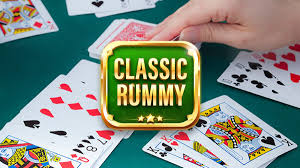What Are The Rules Of Rummy, is a classic card game beloved for its blend of skill, strategy, and luck. With various versions and house rules, Rummy can initially seem complex, but at its core, the game follows a set of fundamental rules. This article will provide a comprehensive guide to the basic rules of Rummy, helping both new and experienced players understand and enjoy this timeless card game.
Objective of Rummy
The primary goal in Rummy is to arrange all the cards in your hand into valid combinations. These combinations consist of sets and sequences. A set comprises three or four cards of the same rank but different suits, while a sequence (or run) consists of three or more consecutive cards of the same suit. The game ends when a player successfully arranges their entire hand into valid sets and sequences and makes a valid declaration.
Basic Rules of Rummy
- Number of Players:
- Rummy is typically played with 2 to 6 players. The number of players can affect the number of cards dealt and the game’s dynamics.
- Card Values:
- Number Cards: Cards numbered 2 through 10 hold their face value.
- Face Cards: Jacks, Queens, and Kings are usually worth 10 points each.
- Aces: Aces can be worth either 1 or 11 points, depending on the specific Rummy version.
- Dealing:
- Each player is dealt a specific number of cards (commonly 10 to 13) from a standard deck of 52 cards.
- The remaining cards form the draw pile, and one card is placed face-up to start the discard pile.
- Gameplay:
- Turn Sequence: Players take turns in a clockwise direction, following these steps:
- Draw: At the start of your turn, draw one card from either the draw pile or the discard pile.
- Meld: Optionally, you can lay down valid sets or sequences on the table.
- Discard: At the end of your turn, discard one card onto the discard pile.
- Turn Sequence: Players take turns in a clockwise direction, following these steps:
- Forming Sets and Sequences:
- Sets: Three or four cards of the same rank but different suits (e.g., 7♠, 7♦, 7♣).
- Sequences: Three or more consecutive cards of the same suit (e.g., 4♠, 5♠, 6♠). Note that sequences may or may not include jokers, depending on the rules.
- Winning the Game:
- The game continues until one player arranges all their cards into valid sets and sequences and declares. This player is declared the winner of the round.
- Declaration: The winning player must lay down their cards and show that their entire hand consists of valid combinations.
- Scoring:
- Points Calculation: After a player declares, the remaining players’ scores are calculated based on the cards left in their hands:
- Number Cards: Worth their face value (e.g., a 5 is worth 5 points).
- Face Cards: Worth 10 points each.
- Aces: Worth 1 or 11 points, depending on the rules.
- Points Calculation: After a player declares, the remaining players’ scores are calculated based on the cards left in their hands:
- Winning the Round:
- The round concludes when a player successfully declares with valid combinations.
- The player with the lowest total score after a predetermined number of rounds or games wins the overall match.
Common Variations and House Rules
Rummy has many variations and house rules, which can alter the gameplay slightly. Some common variations include:
- Gin Rummy:
- Objective: To form valid sets and sequences and “knock” or declare when the player’s unmatched cards total 10 points or less.
- Gameplay: Similar to traditional Rummy, but with differences in scoring and declaring.
- Indian Rummy:
- Objective: To form at least two sequences, one of which must be a pure sequence (without jokers).
- Gameplay: Often played with two decks and jokers as wild cards.
- Kalooki (Kaluki):
- Objective: To form valid sets and sequences, with special rules for jokers and multiple decks.
- Gameplay: May involve more complex rules and variations in deck usage.
Tips for Playing Rummy
- Focus on Sequences: Prioritize forming at least one pure sequence early in the game to minimize penalties.
- Manage Your Hand: Organize your cards and discard those that are less useful for forming sets or sequences.
- Observe Opponents: Pay attention to the cards picked and discarded by opponents to gain insights into their strategies.
- Use Jokers Wisely: Jokers can be used to complete sets and sequences but should be used strategically.
Conclusion
Rummy is a versatile and engaging card game that offers a mix of skill, strategy, and chance. By understanding the basic rules and gameplay mechanics, players can enjoy a rewarding experience while mastering this classic game. Whether you’re playing a traditional version or exploring one of its many variants, knowing the rules and strategies will help you navigate the game effectively and increase your chances of success.




